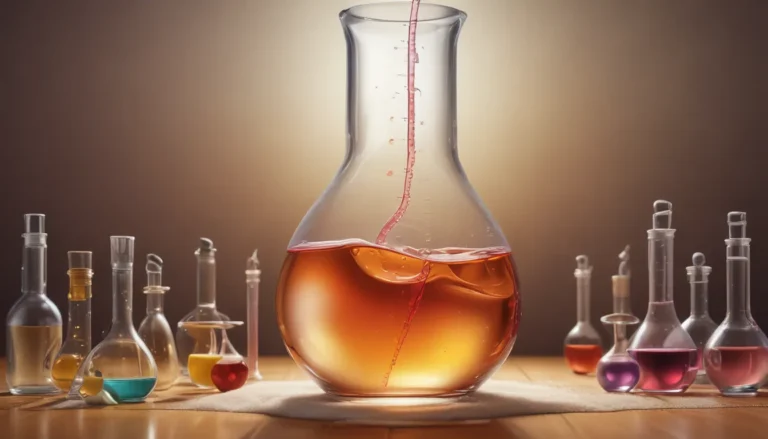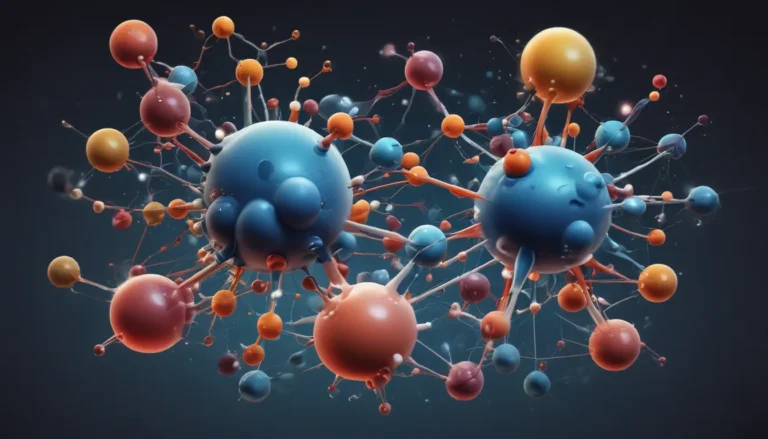A Note About Images: The images used in our articles are for illustration purposes only and may not exactly match the content. They are meant to engage readers, but the text should be relied upon for accurate information.
Polymers are the unsung heroes of our modern world, quietly revolutionizing industries and everyday products. From the plastic bottles we discard to the fibers in our clothing, polymers play a vital role in shaping our lives. These complex molecules, composed of repeating units called monomers, possess remarkable properties that make them incredibly versatile and invaluable.
The Versatility of Polymers
Polymers are like chameleons, capable of adapting to various forms such as plastics, rubber, and fibers. What sets them apart is their ability to have their properties altered, resulting in materials with a diverse range of characteristics. This versatility makes polymers indispensable across numerous industries, from packaging materials to medical devices.
The Astonishing Applications
The sheer breadth of applications for polymers is jaw-dropping. They permeate every aspect of our daily lives, from the clothes we wear to the cars we drive. Their adaptability and durability have cemented polymers as indispensable in our modern world, with no signs of slowing down.
The Fascinating World of Synthetic Polymers
Synthetic polymers, born from petrochemicals, have propelled various industries to new heights. Household names like polyethylene, polypropylene, and polyvinyl chloride (PVC) owe their exceptional properties to synthetic polymers. Their strength, flexibility, and resistance to heat and chemicals have made them indispensable in our daily lives.
Embracing Biodegradability
The rise of biodegradable polymers in recent years marks a significant shift towards sustainable solutions. These polymers can be broken down by natural processes, lessening their environmental impact. As alternatives to traditional plastics, they hold promise in applications such as packaging and disposable products.
The Marvel of Superabsorbent Polymers
Enter superabsorbent polymers, with their uncanny ability to soak up vast amounts of liquid relative to their own mass. Often found in baby diapers and sanitary napkins, these polymers owe their absorbency to their cross-linked structure. A true marvel of modern material science!
Shape Memory: Where Science Meets Sorcery
Shape memory polymers possess a mind-boggling ability to “remember” their original form and revert to it under certain conditions, like heat or light. This property opens doors to innovative applications in medicine, from self-expanding stents to smart sutures that adjust tension autonomously.
Illuminating Possibilities with Conductive Polymers
Conductive polymers, with their electrical conductivity rivaling metals, have reshaped the electronics industry. From organic light-emitting diodes (OLEDs) to flexible displays and electronic textiles, these polymers are ushering in a new era of technological advancements and possibilities.
Nature’s Gift: Natural Polymers
Not all polymers are born in laboratories. Natural polymers, such as proteins and carbohydrates, are fundamental to life itself. From DNA to cellulose and collagen, these biologically occurring polymers play indispensable roles in the intricate tapestry of life.
In conclusion, polymers embody a world of wonder and ingenuity, enriching our lives in ways we often overlook. From synthetic marvels to biodegradable alternatives and natural treasures, the realm of polymers offers a tapestry of possibilities waiting to be explored and harnessed for a brighter, sustainable future.
FAQs
- What exactly are polymers?
Polymers are large molecules composed of repeating subunits known as monomers. They can exist naturally or be synthetically created, boasting a wide array of physical and chemical properties.
- Can you give examples of common polymers?
Common polymers span a wide spectrum, ranging from plastic bottles and rubber tires to DNA, proteins, and cellulose.
- How are polymers made?
The synthesis of polymers, termed polymerization, involves chemically bonding monomers to form extensive chains or networks.
- What are some practical uses for polymers?
Polymers find their way into various industries, serving purposes in packaging, construction, medical devices, electrical insulation, textiles, and beyond.
- Are polymers environmentally friendly?
While certain polymers can have detrimental effects on the environment, ongoing efforts are underway to develop sustainable and eco-friendly alternatives.
- Can polymers be recycled?
Yes, many polymers are recyclable, offering a means to reduce waste, conserve resources, and minimize environmental impact.
- Is it possible to enhance polymer properties?
Indeed, polymer properties can be adjusted through techniques such as blending, cross-linking, and additive incorporation to bolster strength, flexibility, or other desirable traits.
- How are polymers utilized in medicine?
Polymers serve pivotal roles in medicine, aiding in drug delivery systems, medical implants, tissue engineering, and regenerative medicine.
Polymers are a wonder to behold, reshaping our world in ways both subtle and grand. From their astonishing properties to their myriad applications, the allure of polymers beckons us into a realm of endless possibilities and innovation. So, the next time you hold a plastic bottle or don synthetic fabric clothing, take a moment to appreciate the exquisite world of polymers and the profound impact they have on our lives.
Let’s delve deeper into the captivating universe of polymers, where science meets creativity, and possibilities are as limitless as our imaginations.
Did you find this information enlightening?
Our commitment to delivering credible and captivating content drives us to share the wonders of polymers with you. Each fact we present is a product of real users like yourself, enriching our database with diverse insights and knowledge. Rest assured, every submission undergoes rigorous editorial scrutiny to ensure accuracy and reliability. Trust in our dedication to quality as we embark on this exhilarating journey of discovery together.





